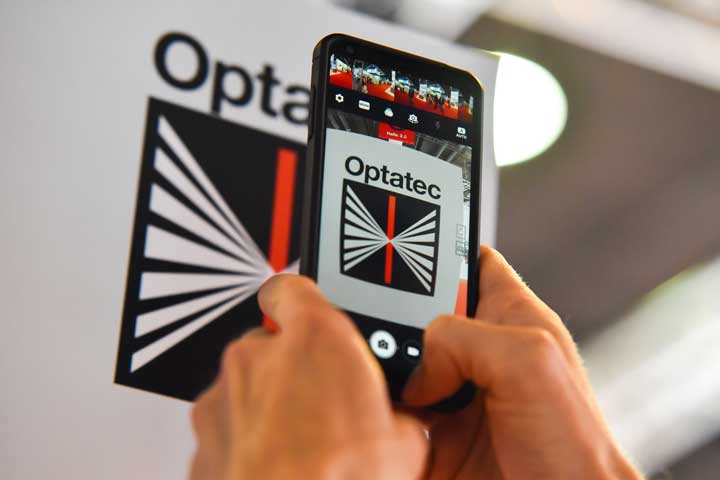Product novelty 02. May 2024
Ion beam-based manufacturing of slanted surface relief gratings (SRG) for optical waveguides
1 / 2

SEM-Image of Slanted Relief Gratings with high aspect ratio.
2 / 2

scia Trim 200 system for producing of slanted gratings on 200 mm substrates using ion beam trimming.
Among the most significant technological challenges associated with augmented reality (AR) and mixed reality (MR) glasses is the production of optical waveguide combiners. For both technologies, surface relief gratings (SRG) are used as the in-couplers and out-couplers of the light into the near-eye displays. For an excellent coupling effect and a high brightness, the SRG needs to be tilted, resulting in a so-called slanted Grating. A tilt angle and etch depth variation are often necessary for advanced grating designs. The slanted gratings can be etched directly into the waveguide or a master stamp is used to produce the AR/MR display by nanoimprint lithography (NIL).
Reactive Ion Beam Etching (RIBE) is ideally suited to create surface relief gratings with constant slant angles. Introducing reactive gases into the etching process makes it possible to control the selectivity of different surface materials or enhance the etch rate. The substrate can be tilted to etch slant angles as flat as 60 degrees. On top of the substrate material is a chromium mask, which defines the grating structures.
Besides RIBE, Reactive Ion Beam Trimming (RIBT) technology can be used to vary the slant angle and the etching depth across the substrate. Using RIBT technology, a focused broad ion beam scans over the surface while substrate tilt and etching dwell time are adjustable. As a result, the slant angle and depth can be precisely controlled, ensuring uniform image illumination for the person wearing the glasses. scia Systems offers industrial-approved solutions to meet customers' demand for high-quality waveguide or masterstamp patterning.
Reactive Ion Beam Etching (RIBE) is ideally suited to create surface relief gratings with constant slant angles. Introducing reactive gases into the etching process makes it possible to control the selectivity of different surface materials or enhance the etch rate. The substrate can be tilted to etch slant angles as flat as 60 degrees. On top of the substrate material is a chromium mask, which defines the grating structures.
Besides RIBE, Reactive Ion Beam Trimming (RIBT) technology can be used to vary the slant angle and the etching depth across the substrate. Using RIBT technology, a focused broad ion beam scans over the surface while substrate tilt and etching dwell time are adjustable. As a result, the slant angle and depth can be precisely controlled, ensuring uniform image illumination for the person wearing the glasses. scia Systems offers industrial-approved solutions to meet customers' demand for high-quality waveguide or masterstamp patterning.

